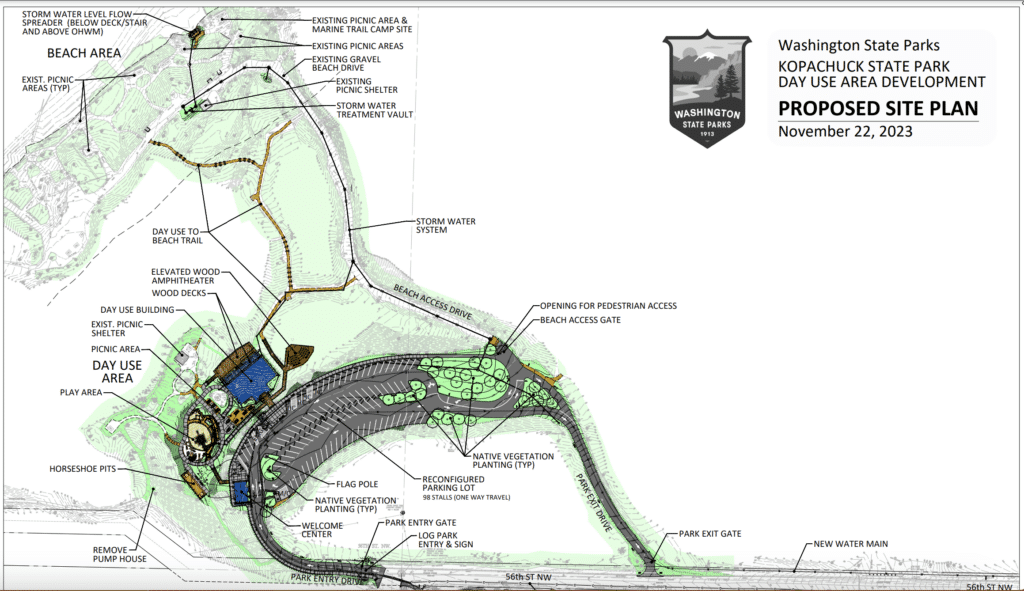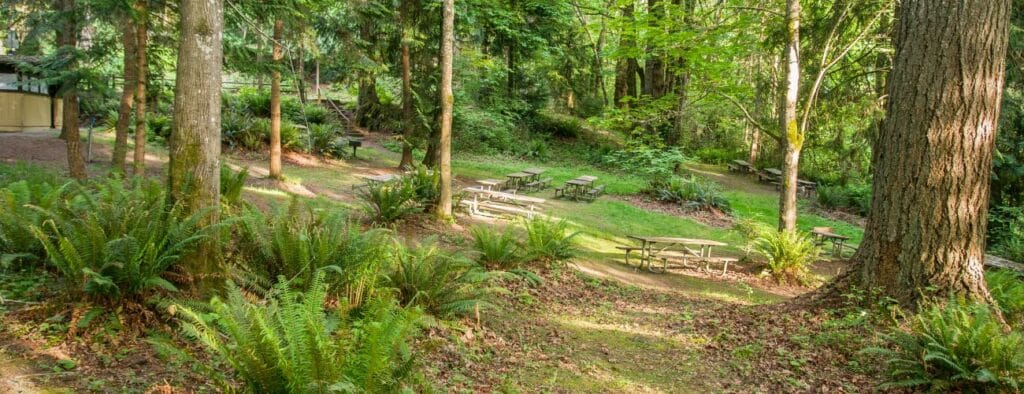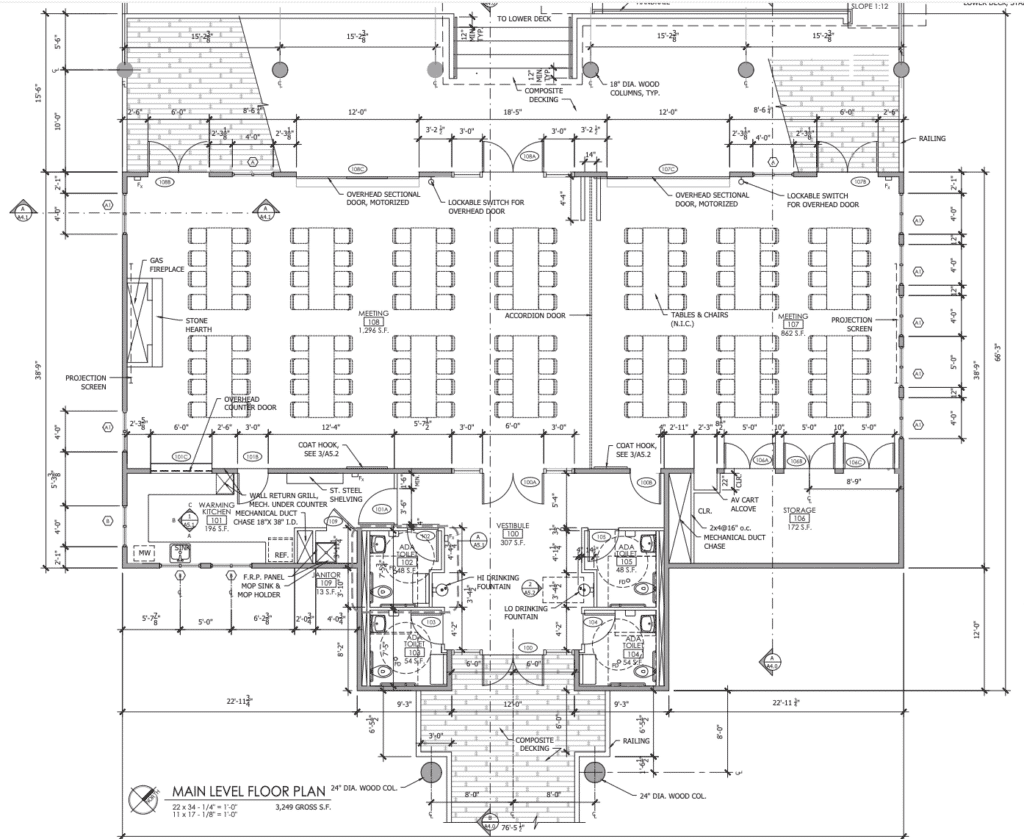Community Environment Government
Kopachuck State Park closing for more than year on June 3
Kopachuck State Park will tentatively close for more than a year on June 3 for a long-awaited makeover. The work will culminate the park’s transition from campground-centered to day-use-only. Construction is projected to continue through mid-summer 2025.
Bids were due by April 25. Pease Construction submitted the lowest of seven at $8.1 million. The Lakewood company withdrew, State Parks spokeswoman Meryl Lassen said Wednesday, so the agency has resumed the review. It probably won’t know more until late next week.
Mountain Construction of Tacoma was the next-lowest bidder at $8.6 million. State Parks’ engineers’ base estimate was $7.1 million.
The companies’ bids included several alternate items. The Legislature appropriated $6.6 million for the project. If State Parks is able to award the base bid to Mountain Construction, some as-yet-undetermined items on the alternate bid would drop off and have to be performed at a later date. The agency is working on how to bridge the funding gap. At this time, it hasn’t moved the start date back, Lassen said.
The state re-envisioned the park for day use after its 41-site campground closed during the summer of 2011 as a safety precaution. Mature Douglas fir trees became infected with laminated root rot disease. State Parks cut down hundreds. Others, however, remain standing and could fall on campers.
Ten years in planning
A master plan completed in 2014 provided a new identity as a day-use park for the 280-acre site along Carr Inlet, 6 miles west of downtown Gig Harbor. It features a new welcome center and a multipurpose building that can accommodate events such as weddings, school groups and community gatherings. Along the sides of the building will be an American Disabilities Act (ADA)-compliant picnic area, amphitheater and playground. New water, sewer and storm-water management systems will support the renovations.
Despite having the master plan in hand in 2014, the Legislature did not allocate funding for the park in the 2015-17 biennium. The state provided $5.5 million in its 2017-19 capital budget. Because of delays in permitting, required redesign and inflation, the funding fell $2.1 million short.
The 2022 supplemental budget covered the gap, but State Parks lost $1 million because it couldn’t get the beach area fully permitted. Rather than further delay the entire project, State Parks postponed work on the lower area, which comprises just 10% to 20%.
State Parks will request funding for the beach area in the 2027-29 biennium.
Park use plummeted after the campground’s closure. In 2010, Kopachuck drew 104,000 visitors. By 2012, a year after the campground closure, Kopachuck drew just more than 60,700 visitors. Visitation gradually climbed back to 104,000 by 2021. Most recently, the park attracted 95,000 in 2023.
Concerns about shaky ground
Tom Rafoth fears the land might give way beneath the Kopachuck improvements and the state’s multimillion-dollar investment would be for naught. That’s what happened to his waterfront home at the park’s southern border.
Rafoth claims that a 2017 landslide on his property resulted from a 2012 clearcut of 6.5 acres of park trees directly uphill. He alleges their removal increased the groundwater level and destabilized an area known for shifting.
He sued. The state settled, without admitting fault, for $1.1 million, according to a State Parks document. The money went toward moving Rafoth’s house back 120 feet and installing eight dewatering wells to lower the water level.
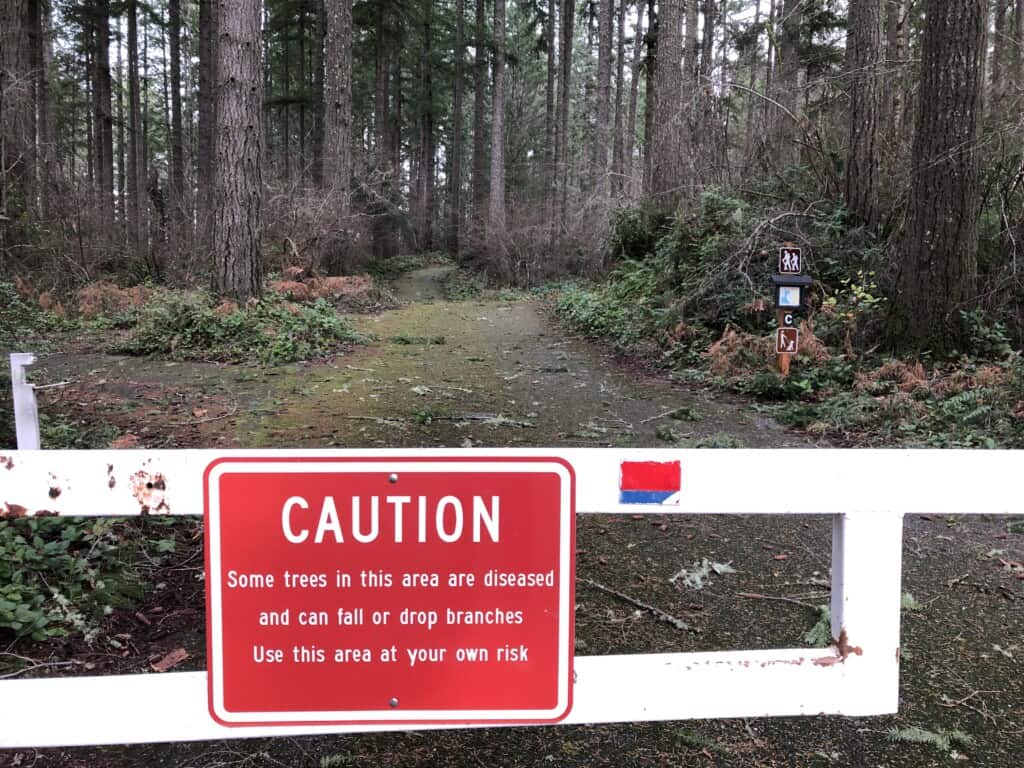
The campground was closed because mature Douglas fir trees became infected with laminated root rot. Photo by Ed Friedrich Ed Friedrich / Gig Harbor Now
The state Department of Natural Resources recommended installing a deep monitor well and using it to track the groundwater level for a year before falling more trees or starting to build, Rafoth said. State Parks declined, attributing the problem to tidal erosion, he said.
“I think monitoring is very important to make sure of what is going on down below (the surface),” said Rafoth. “If you’re going to put that much money into something, I’d think you’d do the test and make sure it’s not going to be a problem.
Deep monitor well suggested
“I don’t think they’ve done the proper investigation. DNR should be reconsulted and do a re-evaluation if a well needs to be done and a geological evaluation of the shoreline and the slope. The problem’s active and ongoing. They’re trying to make it an erosion problem, like from wave action. I think somebody really needs to look into it. They should at the very least follow the recommendation of the DNR.”
State Parks is fully aware of Kopachuck’s instability. A 2019 initial project review by Pierce County stated: “Two pressing concerns at the site are slope instability — damaging and threatening to trails, restrooms and beach access — and ground movement which has resulted in cracks and slumps in several areas, including the beach area restroom and marine campsite.”
The beach restroom was removed in 2014 and the campsite was relocated in 2016 due to instability and safety concerns, the report said. A new restroom goes in the parking lot area, which remained stable.
The project adheres to design recommendations provided in the Subsurface Exploration, Geological Hazard, and Geotechnical Engineering Report prepared in 2018, according to the project review. The new event building and welcome center were placed behind a recommended 65-foot setback from the top of the slope. Stormwater runoff will be tight-lined (in pipes) down to the beach area to avoid saturating unstable slopes.
“We worked closely with the county and other agencies regarding the slope and were one of the first agencies to work within the new county regulations,” said Lassen. “We made changes to our plans after these studies were done with the primary goal of retaining the trees and protecting the slope, and secondary goals of retaining views and preserving the neighbors’ peace and quiet.”
Leave it natural
Readers of a previous Kopachuck story responded that they don’t want new amenities. Just leave it all natural, they said. The public, however, recommended the improvements that wound up in the master plan, Lassen said.
“We aren’t expanding the park’s footprint,” she said. “Instead, we’re making improvements for the enjoyment of the community around the park.”
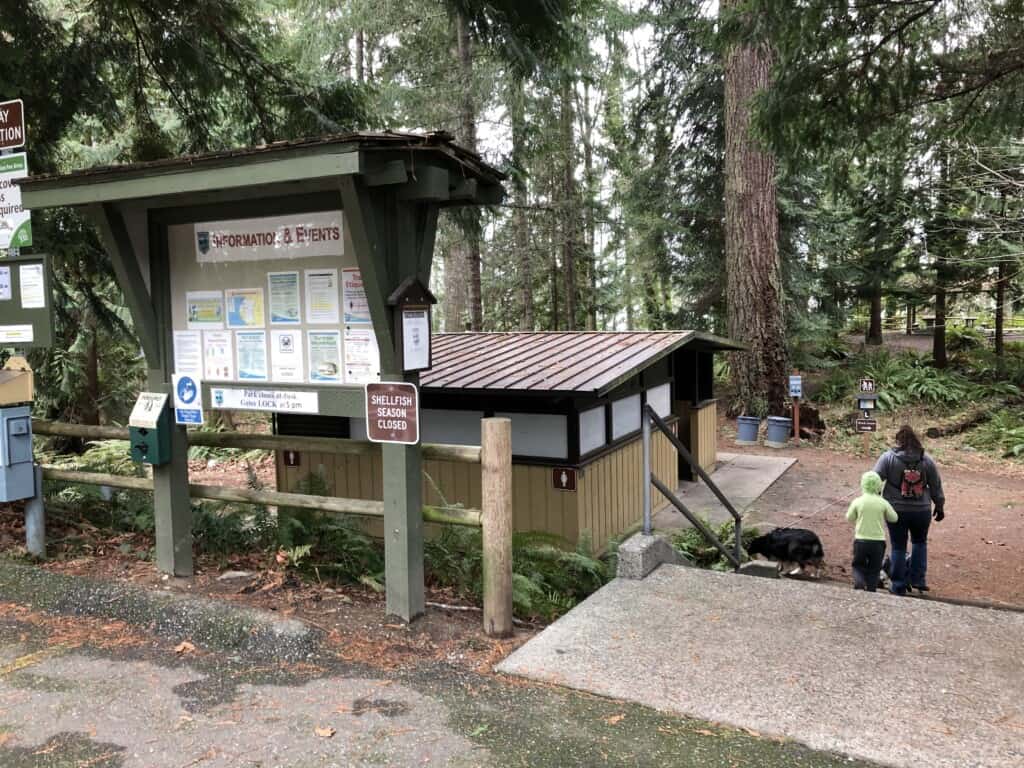
Restroom in upper part of Kopachuck State Park. Plans call for a multipurpose building adjacent to play and picnic areas in the upper park. Photo by Ed Friedrich Ed Friedrich / Gig Harbor Now
They particularly spoke against a playground. Not every park needs one, they said.
It won’t be just your typical playground.
“The new play area at Kopachuck will be immersed in nature and will fit in with the park’s surroundings, Lassen said. “It won’t just be a Big Toy.”
It will be nature-based, including a log tower and log cabin structures.
“Additionally, some of the area’s schools do outdoor learning in the park,” Lassen said. “This gives the community another benefit; the kids will be able to play at lunchtime or recess during their field trips.”
The buildings are also designed to blend with the landscape.
Campground hurdles too big
Several other readers lamented closure of the campground. It could only re-open if all the diseased trees are removed, which would be problematic if not impossible.
“Parks had multiple public meetings where we heard from many people who were concerned about removing the large trees, while others had strong feelings about keeping the campground open,” Lassen said.
“We investigated the possibility of additional tree removal to mitigate risk in the campground and found we would need to do extensive geotechnical studies to determine what impact large-scale tree removal might have on slope stability. It was quite possible that we would not be able to get permits for the scale of tree removal needed to reopen the campground.
“Based on the desire to retain the large trees and uncertainty about additional tree removal, we made the decision to move forward with re-envisioning Kopachuck as a day-use park.”

